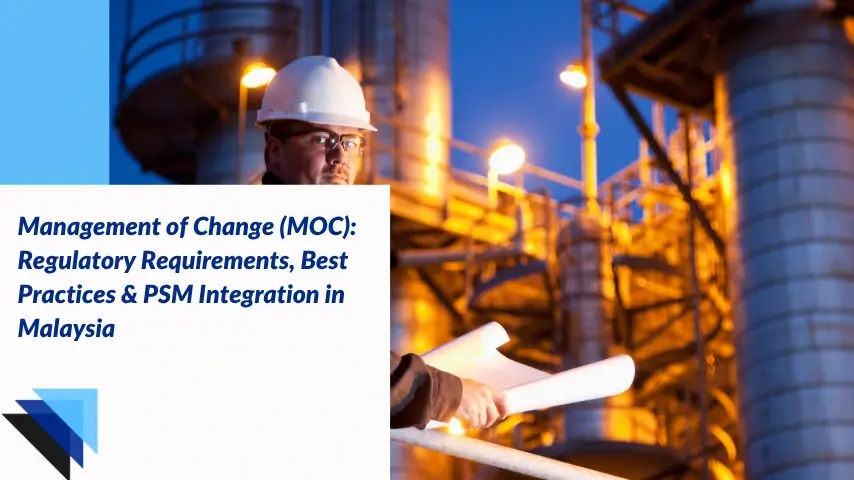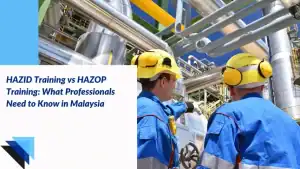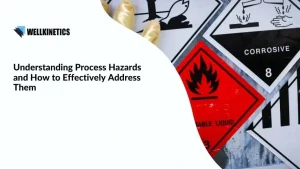Management of Change (MOC) is a systematic process used to evaluate, document, and control changes to processes, equipment, personnel, or operations in order to ensure that safety, health, environmental, and operational risks are properly managed. It involves identifying potential impacts of a proposed change, assessing associated risks, implementing necessary safeguards, and obtaining approvals before the change is made. MOC is a critical component of process safety management (PSM) and helps prevent incidents caused by unintended consequences of changes, ensuring that modifications are thoroughly reviewed and communicated to all relevant stakeholders.
Managing organizational change effectively is a critical necessity in industrial settings, especially sectors like manufacturing, oil and gas, chemical plants, and processing plants. The Management of Change (MOC) framework is a vital component within any management system, ensuring the safety of workers in environments where hazardous materials, toxic substances, or heavy machinery are commonplace. By integrating change management and safety management, organizations protect operational integrity, enhance business processes, and reduce the risk of chemical accidents and equipment changes. Malaysia, as an emergent hub for industrial growth in Southeast Asia, has specific regulatory requirements for MOC, along with opportunities for organizations to incorporate Process Safety Management (PSM) principles to support business improvements, OHS management systems, and workplace safety.
This article explores the regulatory framework for MOC in Malaysia, key strategies for best practices such as risk assessment, hazard identification, and management of change checklists, and how PSM and change agents help organizations achieve safer and more efficient operations.
Struggling to Implement MOC in Your Facility?
Our experts guide you in setting up a compliant and practical Management of Change system tailored for Malaysian industries.
- What Is the Management of Change (MOC) Framework and How Does It Enhance Safety and Compliance in Malaysian Industries?
- What Are the Regulatory Requirements for Management of Change (MOC) in Malaysia?
- What Are the Best Practices for Implementing Management of Change (MOC) in Industrial Settings?
- What Are the Key Steps in the Management of Change (MOC) Process for Safe and Compliant Operations?
- How Does Process Safety Management (PSM) Enhance the Effectiveness of Management of Change (MOC)?
- What Is the Difference Between Management of Change (MOC) and Change Management?
- What Are Common Challenges in Management of Change (MOC) and How Can They Be Effectively Addressed?
- How Wellkinetics Can Help
What Is the Management of Change (MOC) Framework and How Does It Enhance Safety and Compliance in Malaysian Industries?
The Management of Change (MOC) framework is designed to provide a structured and proactive approach to assessing, approving, and implementing operational changes within an organization, such as equipment changes, adjustments to operating procedures, process modifications, or updates to control systems. These organizational changes can drive innovation and operational improvements, but they also introduce uncertainties and risks, notably in industrial facilities handling hazardous substances and chemical usage.
Adhering to MOC protocols in Malaysia is a regulatory and operational best practice that prioritizes hazard recognition, control of major accident hazards, and the mitigation of chemical release or other process safety risks. By establishing a robust change management approach within their management system, companies can improve compliance with standards such as ISO 45001:2018, ISO 14001:2015, and ISO 9001:2015, and deliver positive outcomes in both employee safety and the customer experience.
Why Is Management of Change (MOC) Necessary for Safety and Risk Management in Industrial Operations?
Organizational changes, even seemingly minor ones, can affect workplace safety, risk profile, business continuity, and the overall management of hazardous materials. Poorly managed transitions can result in chemical release, system failures, or environmental and safety incidents. A robust MOC process, supported by risk management planning, ensures that operational changes are thoroughly evaluated through risk analysis, hazard identification, and Pre-Startup Safety Review (PSSR).
Malaysia’s regulatory agencies place strong emphasis on risk mitigation, safety reviews, and safety audits for industries dealing with hazardous materials, heavy machinery, and chemical substances. Integrating MOC with best practices in Process Safety Management (PSM) helps ensure that all operational changes align with global standards and local laws, promoting a strong safety culture, safe operations, and effective hazard control.
RELATED: The Importance of Process Safety in Handling Hazardous Substances
What Are the Regulatory Requirements for Management of Change (MOC) in Malaysia?
Malaysia’s regulatory requirements for MOC are shaped by its commitment to workplace safety, risk mitigation, and environmental stewardship. Industrial facilities, especially those in chemical plants or processing sectors, must comply with detailed regulatory frameworks to manage hazardous materials and ensure both environmental and worker safety.
What Role Does the Occupational Safety and Health Act (OSHA) 1994 Play in Management of Change (MOC) Compliance in Malaysia?
The Occupational Safety and Health Act (OSHA) 1994 is the cornerstone of MOC regulations, mandating that employers adopt appropriate safety management measures to control workplace hazards, especially when implementing changes in operational procedures or organizational structure. The Department of Occupational Safety and Health (DOSH) regulates compliance with hazardous substances, and the overlap with MOC practices is especially pronounced in MOC checklists, incident reports, and documented information associated with operational changes.
For businesses handling hazardous materials, adherence to the OSHA, including requirements for hazard control and risk engineers, is critical in preventing chemical accidents and ensuring safe operations.
How Does the Environmental Quality Act 1974 (EQA) Influence Management of Change (MOC) for Environmental Safety in Malaysia?
The Environmental Quality Act 1974 shapes MOC expectations for organizations with a focus on environmental impact. Any change in process, equipment, or chemical storage must be preceded by a risk assessment and hazard identification to minimize risks associated with hazardous materials disposal or chemical release.
Which International Standards and Guidelines Support Best Practices for Management of Change (MOC) in Malaysia?
Best practices for managing change in Malaysia often reference international standards and guidelines, such as:
- Occupational Safety and Health Administration (OSHA) Process Safety Management (PSM)
- ISO 9001, ISO 9001:2015, ISO 14001:2015, ISO 45001:2018
- Health and Safety Executive (HSE) frameworks
- American Petroleum Institute’s (API) safety management standards
These standards help guide the development of safe operating procedures, the hierarchy of hazard control, and continuous improvement within business processes and the OHS management system.
Not Sure If Your MOC Process Meets Legal Requirements?
We’ll review your current MOC practices and help you meet OSHA 1994 standard.
What Are the Best Practices for Implementing Management of Change (MOC) in Industrial Settings?
Adopting effective MOC best practices requires a blend of risk management planning, communication plans, safety training, and documentation, all aligned with safe operations and regulatory compliance.
1. Establishing Clear Policies and Standard Operating Procedures
Organizations should establish and communicate clear MOC policies, roles, and Standard Operating Procedures (SOPs) for managing operational changes, conducting safety reviews, and escalating safety concerns. Change agents and risk engineers play a crucial role in ensuring every change—be it equipment changes, process alterations, or chemical usage—follows documented procedures and is assessed for hazards and risks.
Example: Companies working with hazardous substances may implement management of change checklists and digital transformation tools to systematically document hazards, control systems, and safety checks during the change process.
2. Conduct Appropriate Risk Assessments and Analysis
Risk assessment is at the core of MOC, involving methods such as process hazard analysis (PHA), Hazard and Operability Analysis (HAZOP), or Failure Modes and Effects Analysis (FMEA). These methods help identify potential risks, support risk analysis and hazard recognition, and guide operational and risk mitigation strategies for all significant changes.
3. Training Workers and Raising Awareness
Comprehensive safety training, including effective use of Personal Protective Equipment (PPE), is essential for empowering workers and cultivating a strong safety culture. Training should address staff concerns, transition planning, and regulatory compliance, and may cover elements such as the ADKAR model for managing organizational change, especially during periods of digital transformation or process upgrades.
4. Documenting Processes and Management Control
Maintaining documented information at every stage enhances management control, supports incident reporting and safety audits, and simplifies reviews by the Health and Safety Executive or other regulators. Accurate documentation also supports ISO compliance and makes safety change management and process safety management more effective.
What Are the Key Steps in the Management of Change (MOC) Process for Safe and Compliant Operations?
A comprehensive MOC process incorporates risk management planning, stakeholder collaboration, and systematic hazard control:
1. Initiation of Change Request
Documented requests should describe proposed operational changes, equipment upgrades, or process modifications and their potential impact on business processes and employee experience.
2. Screening and Preliminary Review
The management system should determine if the change warrants a full MOC process, using management of change checklists and risk profile assessments.
3. Risk Assessment and Impact Analysis
Conduct process hazard analysis (PHA), hazard identification, and safety reviews to ensure safe operations and compliance with the hierarchy of hazard control.
4. Development of Action Plans
Establish project plans, communication plans, and operational improvements to mitigate identified risks. Collaborate with change agents, risk engineers, and safety committees where applicable.
5. Approvals and Authorization
Secure decision-maker and stakeholder buy-in on risk mitigation measures, safety checks, and management controls before implementing changes.
6. Implementation of Change
Execute the operational change using standard operating procedures, documented information, and ongoing communication plans.
7. Post-Implementation Review and Documentation
Complete post-implementation safety audits, incident reports, and Pre-Startup Safety Review (PSSR) to ensure ongoing compliance and continuous improvement.
Through these steps, every operational change undergoes rigorous risk analysis, management control, and documentation, promoting safe operations and long-term business improvements.
How Does Process Safety Management (PSM) Enhance the Effectiveness of Management of Change (MOC)?
Process Safety Management (PSM) provides additional structure for controlling major accident hazards, especially in chemical plants, processing plants, and the energy and power industry. By integrating safety management, hazard identification, risk analysis, and risk mitigation routines into the MOC process, organizations can continually improve both safety of workers and operational efficiency.
Which Elements of Process Safety Management (PSM) Enhance the Management of Change (MOC) Process?
Integrating key elements of Process Safety Management into the Management of Change process strengthens the controls around potential hazards. The following components of PSM support a more effective, systematic, and safer approach to managing change in high-risk industries:
- Process Hazard Analysis: Regular hazard identification and process hazard analysis enhance risk mitigation, safety audits, and chemical storage practices.
- Maintenance Integrity: This includes maintenance of control systems and automated identification protocols for equipment changes, ensuring robust management control.
- Emergency Preparedness and Incident Reporting: Strong safety management includes communication plans, incident reports, documented information, and risk profile reviews for chemical release or other major incidents.
Want to Integrate MOC with PSM Seamlessly?
We help you connect MOC procedures with Process Safety Management systems for full regulatory and operational coverage.
What Is the Difference Between Management of Change (MOC) and Change Management?
While Management of Change (MOC) targets operational changes, safety management, hazardous materials control, and risk mitigation in regulated industrial facilities, change management focuses on broader organizational change by addressing digital transformation, communication plans, transition planning, and business improvements.
- MOC is crucial for occupational safety, process safety management, chemical accident prevention, equipment changes, hazardous material handling, and compliance with standards like ISO 9001:2015 and OHS management system requirements.
- Change management supports workplace safety through staff engagement, safety training, customer experience improvement, and resilience building using models like ADKAR.
Both are vital for creating a safety culture and managing changes that affect employee experience, safe operations, and organizational resilience.
What Are Common Challenges in Management of Change (MOC) and How Can They Be Effectively Addressed?
Organizations may encounter challenges in their safety change management efforts, such as inconsistencies in the application of procedures, insufficient safety training, or poor communication during operational changes. To address these:
- Lack of Awareness and Training: Provide ongoing safety training and refresher programs to reinforce safety culture and hazard control practices.
- Inconsistent SOPs: Use standard operating procedures, management of change checklists, and management control mechanisms to enable consistency across projects.
- Communication Gaps: Implement clear communication plans and documented information systems to support transition planning and incident reporting.
- Time Constraints: Integrate streamlined digital transformation tools for approvals, safety checks, and safety reviews within project plans.
- Leadership Buy-in: Engage change agents and management early, emphasizing the value of risk mitigation, operational improvements, and compliance with Occupational Safety and Health Administration regulations.
By addressing these challenges, organizations can protect worker safety, maintain compliance with ISO 45001:2018 and ISO 14001:2015, and foster continuous improvement within their OHS management system.
Train Your Team on MOC the Right Way
Enroll in our MOC training programs to improve safety, regulatory readiness, and operational control.
How Wellkinetics Can Help
Wellkinetics provides comprehensive support and consultation for organizations managing operational changes, chemical usage, or implementing safety management systems. Our team of experts assists with:
- Training: Structured programmes to equip your team with the knowledge and skills to identify, assess, and control risks arising from operational changes, including regulatory requirements, hazard identification techniques, and documentation best practices.
- Workshops: Interactive, scenario-based sessions where participants apply Management of Change (MOC) principles to real or simulated plant changes, helping reinforce practical decision-making and problem-solving under expert guidance.
- Consultancy: Bespoke advisory services to design or enhance your MOC framework, procedures, and governance processes, ensuring alignment with international standards (e.g., CCPS, OSHA, CIMAH) and industry best practices.
- Audits: Independent evaluations to measure the effectiveness of your MOC system, identify gaps, and recommend targeted improvements to strengthen compliance and operational safety.
Partnering with Wellkinetics ensures your business is equipped to manage change safely by reducing chemical accident risk, enhancing safe operations, and maximizing long-term value for all stakeholders across the energy and power industry, chemical plants, and processing sectors.
Learn more about our process safety management consultancy services.




